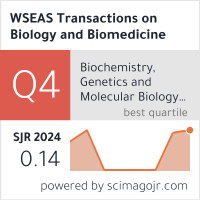MOLECULAR MECHANISMS OF DISINFECTANT-INDUCED CROSS-RESISTANCE IN NEONATAL CARE UNITS -ASSOCIATED ESCHERICHIA COLI
Keywords:
Cross-resistance, biofilm, Escherichia coli, quaternary ammonium compounds, molecular mechanisms, hospital-acquired infectionsAbstract
Background: The role of hospital disinfectants in infection prevention is paramount; however, some studies indicate that sublethal exposure may enhance resistance to lethal concentrations of an antibiotic through cross-resistance mechanisms. The goal of this research is to determine the molecular mechanisms involved in the antibiotic resistance of biofilm-forming Escherichia coli caused by disinfectants, which were collected in neonatal care units.
Methods: We studied 35 strains from nursery babies through specific molecular, biochemical, and phenotypic techniques. The strains underwent exposure to gradient concentrations of quaternary ammonium compounds (QACs), chlorhexidine, ethanol, and sodium hypochlorite. The overrepresented patterns of cross-resistance, biofilm forming ability, as well as molecular and genetic mechanisms, were assessed through QPCR, biofilm assays, and antibiotic susceptibility testing.
Results: Treatment of QACs resulted in an increase in biofilm formation by 20.0% (p<0.001) and an increase in the prevalence of multidrug resistance (MDR) from 52.9% to 64.7%. Exposure to chlorhexidine resulted in 8.7% increased biofilm formation as well as a 5.9% increase in β-lactam resistance. On the contrary, ethanol and sodium hypochlorite not only reduced biofilm formation by 33.3% and 25.6% respectively, but also reduced the prevalence of MDR to 47.1%. Molecular studies confirmed hypothesis of overexpression of acrAB-tolC efflux pump biofilm related to quorum sensing (csgA, bssR) genes under the influence of QACs. There is also a strong correlation between biofilm density (OD₅₇₀ ≥1.25) and resistance to carbapenem (r=0.78, p<0.001).
Conclusions: It has been established through this study that both QACs and chlorhexidine are able to trigger cross-resistance through mechanisms that are biofilm dependent. In contrast, oxidative disinfectants are able to eliminate and control bioburden without the potential of encouraging resistance.
Such findings directly inform policies regarding hospital sanitization procedures and programs aimed at the minimization of antimicrobial agents’ usage.
References
Magiorakos, A. P., Srinivasan, A., Carey, R. B., Carmeli, Y., Falagas, M. E., Giske, C. G., Harbarth, S., Hindler, J. F., Kahlmeter, G., Olsson-Liljequist, B., Paterson, D. L., Rice, L. B., Stelling, J., Struelens, M. J., Vatopoulos, A., Weber, J. T., & Monnet, D. L. (2012). Multidrug-resistant, extensively drug-resistant and pandrug-resistant bacteria: An international expert proposal for interim standard definitions for acquired resistance. Clinical Microbiology and Infection, 18(3), 268-281. https://doi.org/10.1111/j.1469-0691.2011.03570.x
Khan, M. S., Zahin, M., Hasan, S., Husain, F. M., & Ahmad, I. (2021). The role of biofilms in the development of antimicrobial resistance. Microbial Pathogenesis, 150, 104711. https://doi.org/10. 1016/j.micpath.2020.104711
Maillard, J. Y. (2018). Resistance of bacteria to biocides. Microbiology, 164(4), 425-438. https://doi.org/10.1099/mic.0.000647
Russell, A. D. (2002). Antibiotic and biocide resistance in bacteria: Comments and conclusions. Journal of Applied Microbiology, 92(S1), 171S-173S. https://doi.org/10.1046/j.1365-2672.92.5 s1.12.x
Buffet-Bataillon, S., Tattevin, P., Bonnaure-Mallet, M., & Jolivet-Gougeon, A. (2016). Emergence of resistance to antibacterial agents: The role of quaternary ammonium compounds. International Journal of Antimicrobial Agents, 48(6), 601-606. https://doi.org/10.1016/j.ijantimicag.2016.09.030
Wand, M. E., Bock, L. J., Bonney, L. C., & Sutton, J. M. (2017). Mechanisms of increased resistance to chlorhexidine and cross-resistance to colistin following exposure of Klebsiella pneumoniae clinical isolates to chlorhexidine. Antimicrobial Agents and Chemotherapy, 61(1), e01162-16. https://doi.org/10.1128/AAC.01162-16
Flemming, H. C., & Wingender, J. (2010). The biofilm matrix. Nature Reviews Microbiology, 8(9), 623-633. https://doi.org/10.1038/nrmicro2415
Stewart, P. S. (2002). Mechanisms of antibiotic resistance in bacterial biofilms. International Journal of Medical Microbiology, 292(2), 107-113. https://doi.org/10.1078/1438-4221-00196
Vuotto, C., Longo, F., Balice, M. P., Donelli, G., & Varaldo, P. E. (2014). Antibiotic resistance related to biofilm formation in Klebsiella pneumoniae. Pathogens, 3(3), 743-758. https://doi.org/ 10.3390/pathogens3030743
Hall-Stoodley, L., Costerton, J. W., & Stoodley, P. (2004). Bacterial biofilms: From the natural environment to infectious diseases. Nature Reviews Microbiology, 2(2), 95-108. https://doi.org/10. 1038/nrmicro821
Costerton, J. W., Lewandowski, Z., Caldwell, D. E., Korber, D. R., & Lappin-Scott, H. M. (1995). Microbial biofilms. Annual Review of Microbiology, 49, 711-745. https://doi.org/10.1146/annurev .mi.49.100195.003431
Donlan, R. M., & Costerton, J. W. (2002). Biofilms: Survival mechanisms of clinically relevant microorganisms. Clinical Microbiology Reviews, 15(2), 167-193. https://doi.org/10.1128/CMR.15 .2.167-193.2002
Hirakawa, H., Nishino, K., Hirata, T., & Yamaguchi, A. (2005). Contribution of the AcrAB efflux pump to high-level fluoroquinolone resistance in Escherichia coli. Journal of Antimicrobial Chemotherapy, 56(1), 111-113. https://doi.org/10.1093/jac/dki169
Fernández, L., & Hancock, R. E. W. (2012). Adaptive and mutational resistance: Role of porins and efflux pumps in drug resistance. Clinical Microbiology Reviews, 25(4), 661-681. https://doi.org/ 10.1128/CMR.00043-12
Langsrud, S., Sundheim, G., & Holck, A. L. (2016). Resistance and adaptation to disinfectants in bacterial biofilms. Journal of Applied Microbiology, 121(3), 479-489. https://doi.org/10.1111/ja m.13207
Bridier, A., Briandet, R., Thomas, V., & Dubois-Brissonnet, F. (2011). Resistance of bacterial biofilms to disinfectants: A review. Biofouling, 27(9), 1017-1032. https://doi.org/10.1080/089270 14.2011.626899
Simões, M., Simões, L. C., & Vieira, M. J. (2010). A review of current and emergent biofilm control strategies. LWT - Food Science and Technology, 43(4), 573-583. https://doi.org/10.1016/j.lwt.2 009.12.008
Kohanski, M. A., Dwyer, D. J., & Collins, J. J. (2007). A common mechanism of cellular death induced by bactericidal antibiotics. Cell, 130(5), 797-810. https://doi.org/10.1016/j.cell.2007.06. 049
Tamma, P. D., Cosgrove, S. E., & Maragakis, L. L. (2021). Combination therapy for treatment of infections with gram-negative bacteria. Clinical Microbiology Reviews, 34(3), e00022-19. https://doi.org/10.1128/CMR.00022-19
Patel, R. (2005). Biofilms and antimicrobial resistance. Clinical Orthopaedics and Related Research, 437, 41-47. https://doi.org/10.1097/01.blo.0000175714.68624.74
O'Toole, G. A. (2011). Microtiter dish biofilm formation assay. Journal of Visualized Experiments, (47), 2437. https://doi.org/10.3791/2437
Clinical and Laboratory Standards Institute. (2021). Performance standards for antimicrobial susceptibility testing (31st ed.). CLSI supplement M100. CLSI.
Mah, T. F., & O'Toole, G. A. (2001). Mechanisms of biofilm resistance to antimicrobial agents. Trends in Microbiology, 9(1), 34-39. https://doi.org/10.1016/S0966-842X(00)01913-2
Lewis, K. (2007). Persister cells, dormancy and infectious disease. Nature Reviews Microbiology, 5(1), 48-56. https://doi.org/10.1038/nrmicro1557
Zhang, L., Mah, T. F., & O'Toole, G. A. (2020). Role of bacterial quorum sensing in biofilm development and antibiotic resistance. Trends in Microbiology, 28(6), 467-480. https://doi.org/10 .1016/j.tim.2020.01.009
Tezel, U., & Pavlostathis, S. G. (2015). Quaternary ammonium disinfectants: Microbial adaptation, degradation and ecology. Current Opinion in Biotechnology, 33, 296-304. https://doi.org/10.1016/ j.copbio.2015.03.018
McDonnell, G., & Russell, A. D. (1999). Antiseptics and disinfectants: Activity, action, and resistance. Clinical Microbiology Reviews, 12(1), 147-179. https://doi.org/10.1128/CMR.12.1.147
Russell, A. D. (2003). Similarities and differences in the responses of microorganisms to biocides. Journal of Antimicrobial Chemotherapy, 52(5), 750-763. https://doi.org/10.1093/jac/dkg422
World Health Organization. (2017). Global priority list of antibiotic-resistant bacteria to guide research, discovery, and development of new antibiotics. WHO. https://www.who.int/news/item/ 27-02-2017-who-publishes-list-of-bacteria-for-which-new-antibiotics-are-urgently-needed
Cassini, A., Högberg, L. D., Plachouras, D., Quattrocchi, A., Hoxha, A., Simonsen, G. S., Colomb-Cotinat, M., Kretzschmar, M. E., Devleesschauwer, B., Cecchini, M., Ouakrim, D. A., Oliveira, T. C., Struelens, M. J., Suetens, C., Monnet, D. L., & Burden of AMR Collaborative Group. (2019). Attributable deaths and disability-adjusted life-years caused by infections with antibiotic-resistant bacteria in the EU and the European Economic Area in 2015: A population-level modelling analysis. The Lancet Infectious Diseases, 19(1), 56-66. https://doi.org/10.1016/S1473-3099(18)30 605-4
Nelson, R. E., Hatfield, K. M., Wolford, H., Samore, M. H., Scott, R. D., Reddy, S. C., Olubajo, B., Paul, P., Jernigan, J. A., & Baggs, J. (2021). The magnitude and cost of antimicrobial resistance in US hospitals. Infection Control & Hospital Epidemiology, 42(10), 1219-1225. https://doi.org/10 .1017/ice.2020.1359
Ciofu, O., Rojo-Molinero, E., Macià, M. D., & Oliver, A. (2017). Tolerance and resistance of Pseudomonas aeruginosa biofilms to antimicrobial agents. FEMS Microbiology Letters, 364(15), fnx123. https://doi.org/10.1093/femsle/fnx123
Høiby, N., Bjarnsholt, T., Givskov, M., Molin, S., & Ciofu, O. (2010). Antibiotic resistance of bacterial biofilms. International Journal of Antimicrobial Agents, 35(4), 322-332. https://doi.org/ 10.1016/j.ijantimicag.2009.12.011
Hana Saied Abdulali, Suleiman Bashir Ellafei, Mousa S.M Gaballh, Abdelkrim Amer and Ibrahim Fouad Mohamed (2025): Antibiotic Resistance and Biofilm Formation in Hospital Nurseries: The Role of Disinfectant Overuse in Pathogenic Bacterial Adaptation, Journal of Chemical Health Risks 15(4), 1232-1250
Downloads
Published
Issue
Section
License
Copyright (c) 2025 WSEAS Transactions on Biology and Biomedicine

This work is licensed under a Creative Commons Attribution-NonCommercial-ShareAlike 4.0 International License.
Author(s) and co-author(s) jointly and severally represent and warrant that the Article is original with the author(s) and does not infringe any copyright or violate any other right of any third parties and that the Article has not been published elsewhere. Author(s) agree to the terms that the WSEAS Journal will have the full right to remove the published article on any misconduct found in the published article.




